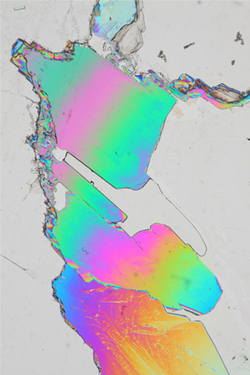Chemical Spectrum and Spectrophotography

Sometimes in chemistry, electrons can jump from one energy orbit into a higher one. This happens when they get extra energy during some chemical process, such as when they are heated. Once they fall back to the lower energy orbit, the excess energy must be emitted in another form. This happens in the form of a photon, which is the basic unit of light.
What This Means to Chemists
Chemists often study the chemical spectrum, because the wavelength of the photon let off in this process, and therefore its color, is different from one element to the next. The difference of the energy level between the high-energy state and the normal state of the element is what determines the wavelength and color of the photon. When heated, each element has its own unique photon color (wavelength).
Spectrophotography
Spectrophotography is the study of the different colors on the emission spectrum of a particular element. This is done using a spectroscope, which separates the components of the light let off by a heated element or compound. The spectrum for a particular element when the light is broken down into its various frequencies will show up as a series of lines, known as a line spectrum. In a way, the line spectrum captured by a spectroscope is like the fingerprint of the element or compound, because no two are exactly alike.
Chemists use spectrophotography to determine the elements within a compound. By heating a compound, studying the resulting light energy using a spectroscope and comparing the results to known emission spectrums for various elements, chemists can determine the basic components of a compound.